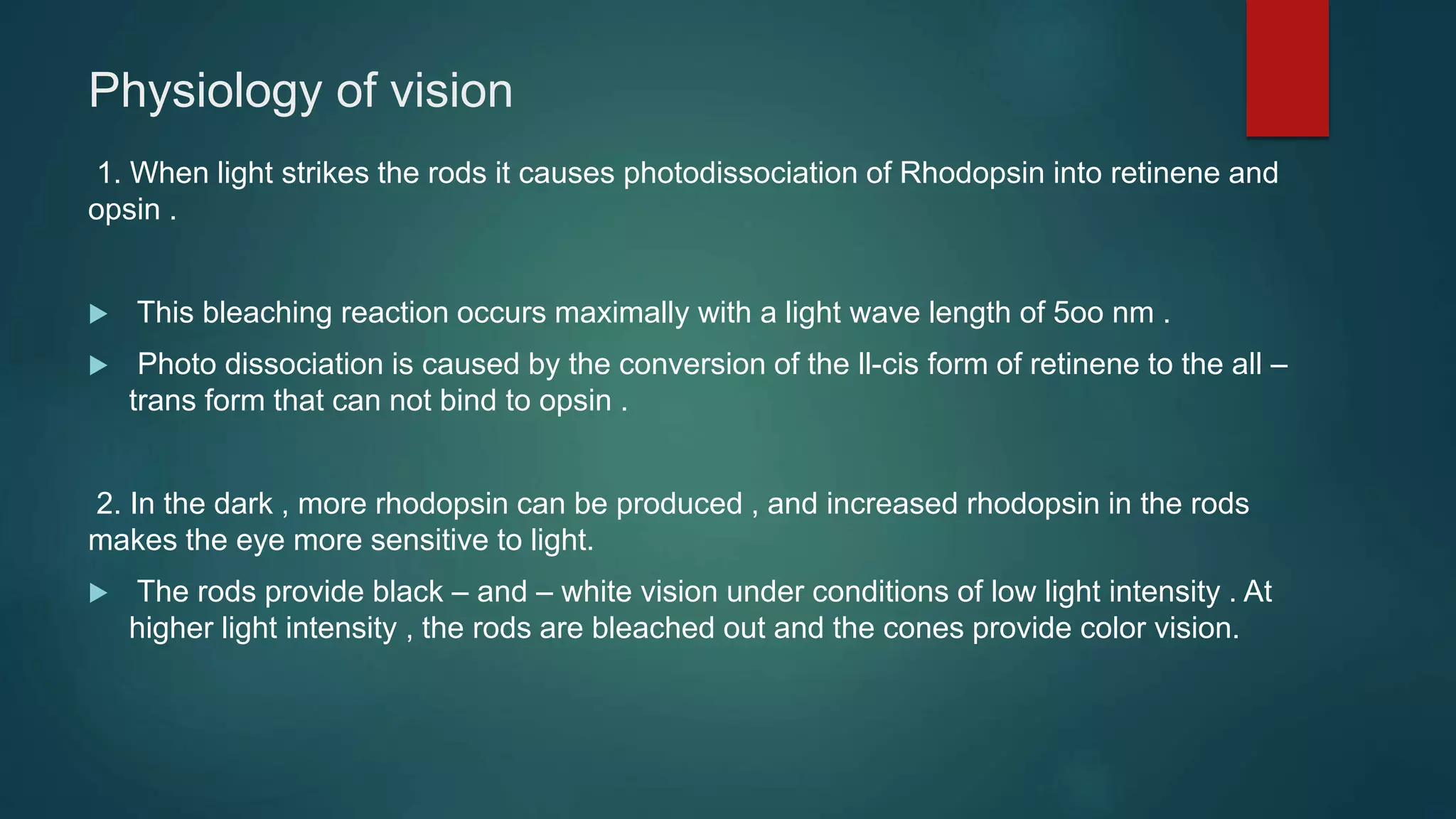The document summarizes the anatomy and physiology of the special senses, focusing on vision and hearing. It describes:
1) The accessory structures of the eye that facilitate vision like the eyelids, conjunctiva, and lacrimal glands.
2) The three layers that make up the walls of the eyeball - fibrous tunic, vascular tunic, and sensory tunic containing photoreceptors.
3) How sound waves are collected by the outer ear, amplified by the middle ear bones, and transduced into nerve impulses in the inner ear for hearing.


![ Lacrimal gland- exocrine gland that secretes a dilute saline solution called tears for
moistening the eyes. [ Tears contain mucus, antibodies and antibacterial enzymes that
protect the eye from infections. Emotional tears also contain enzymes that seem to help
reduce stress levels].](https://image.slidesharecdn.com/thespecialsenses-221118084728-eeb2294c/75/The-Special-Senses-pptx-3-2048.jpg)
































![Sense Of Hearing
a) The gross anatomy of the human ear includes the outer ear (consists of auricle and external
auditory meatus), middle ear (consists of tympanic membrane and auditory ossicles [malleus ,
incus, and stapes] and inner ear ( consists of cochlea, 3 semicircular canals and the
vestibulocochlear nerve).
b) The outer ear is responsible for transferring sound waves from the environment to the middle
ear.
c) The middle ear is responsible for amplifying sound waves into strong signals for the hearing
receptors to detect.
d) The inner ear is responsible for using mechanoreceptors to detect stimuli for hearing (in
cochlea) and equilibrium (in semicircular canals), and send the nerve impulses through the
vestibulocochlear nerve (Nerve VIII) to the brain.
e) the middle ear also contains the Eustachian tube (auditory tube) that connects with the
pharynx for equalizing air pressure in the skull.](https://image.slidesharecdn.com/thespecialsenses-221118084728-eeb2294c/75/The-Special-Senses-pptx-36-2048.jpg)























